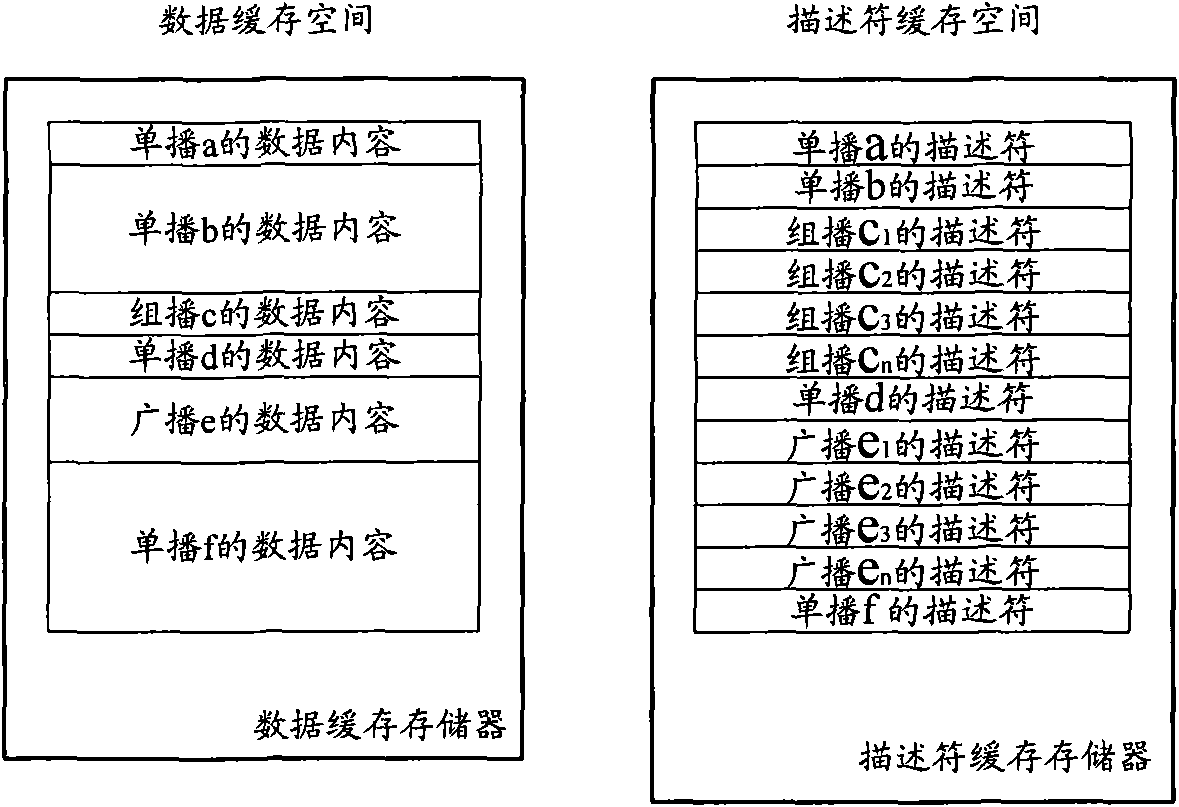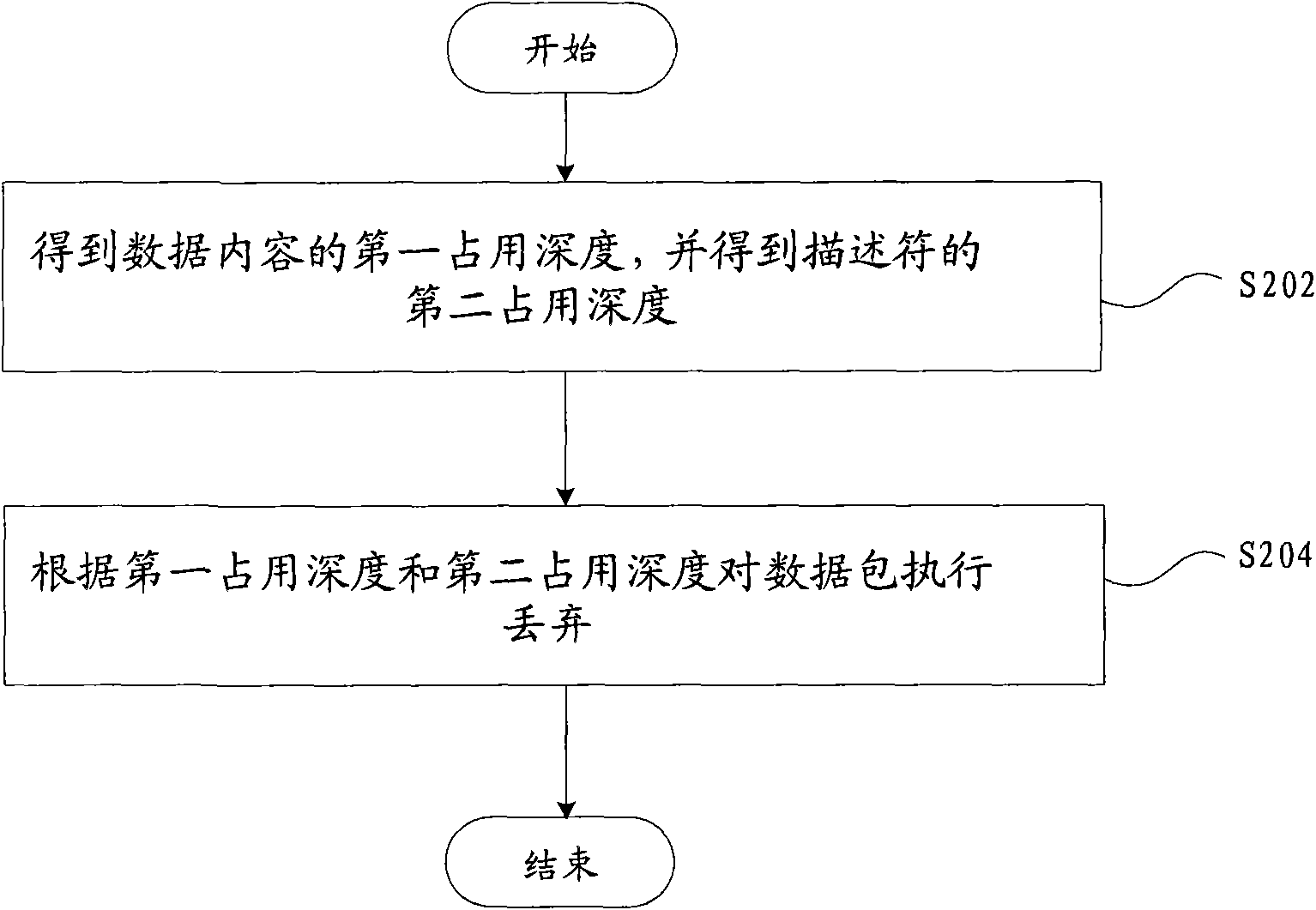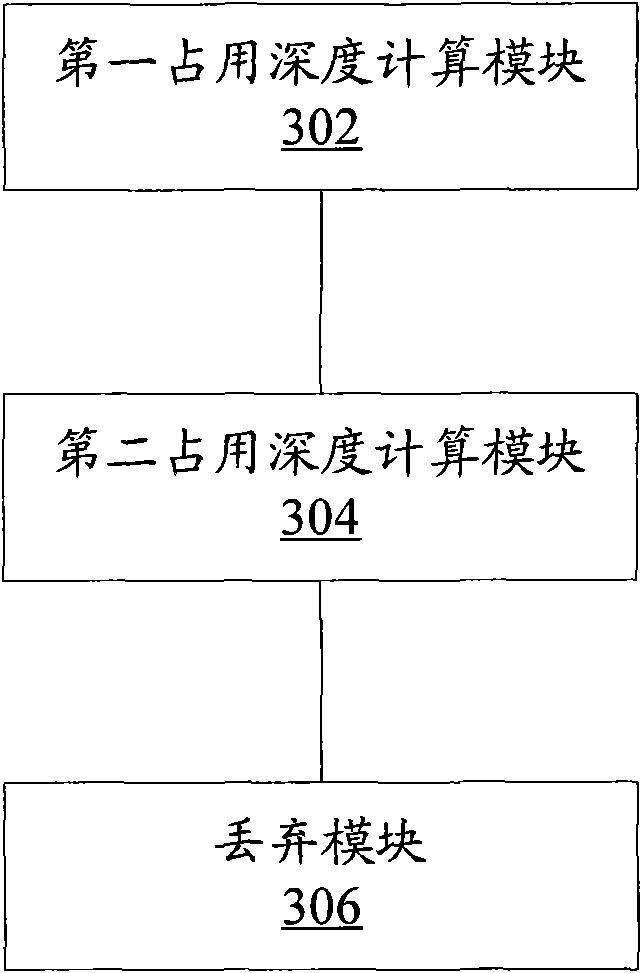Random early detection method and device for data flow management
A technology of random early discarding and data flow, applied in the field of communication, can solve problems affecting network quality, overflow of descriptor buffer space, etc., achieve the effect of improving network quality and avoiding a large number of continuous packet loss
- Summary
- Abstract
- Description
- Claims
- Application Information
AI Technical Summary
Problems solved by technology
Method used
Image
Examples
no. 1 example
[0026] figure 2 is a flowchart of a random early discard method for data traffic management according to the first embodiment of the present invention. Such as figure 2 As shown, the random early discarding method for data traffic management according to the first embodiment of the present invention includes:
[0027] Step S202: Obtain the first occupied depth of the data content according to the first length of the data content of the data packet to be input into the data cache space of the traffic management chip and the current occupied depth of the data cache space, and obtain the first occupied depth of the data content according to the first occupied depth of the data packet descriptor. Two lengths and the current occupied depth of the descriptor cache space obtain the second occupied depth of the descriptor;
[0028] Step S204, discarding the data packet according to the first occupation depth and the second occupation depth.
[0029] The random early discarding me...
no. 2 example
[0040] image 3 is a block diagram of a device for random early discarding for data traffic management according to a second embodiment of the present invention.
[0041] Such as image 3 As shown, the random early discarding device for data traffic management according to the second embodiment of the present invention includes: a first occupancy depth calculation module 302, which is used to The first length of the first length and the current occupation depth of the data cache space to obtain the first occupation depth of the data content; the second occupation depth calculation module 304 is used for according to the second length of the descriptor of the data packet and the current occupation depth of the descriptor cache space Obtaining a second occupancy depth of the descriptor; a discarding module 306, configured to discard the data content and the descriptor of the data packet according to the first occupancy depth and the second occupancy depth respectively.
[0042...
no. 3 example
[0047] In this embodiment, the data cache space is a DDR memory, the descriptor cache space is a QDR memory, and a multicast data packet with a multicast frequency of 4 is used as a data packet to be cached.
[0048] The random early discarding method for data traffic management according to the third embodiment of the present invention includes the following steps:
[0049] Step 401, execute on the data packet: for the RED application from the multicast replication device, identify the packet type as a multicast packet, and extract its queue number;
[0050] Step 402, execute at the beginning and end of the data packet chain: according to the queue number, such as Figure 4a As shown, the original queue occupation depth Dn-1 is read from RAM1 through port A;
[0051] Step 403, execute at the head of the data packet chain: calculate the expected occupancy depth, the estimated depth is equal to the occupancy depth plus the packet length, i.e. Dpre=Dn-1+Lrequest;
[0052] Step...
PUM
 Login to View More
Login to View More Abstract
Description
Claims
Application Information
 Login to View More
Login to View More - R&D
- Intellectual Property
- Life Sciences
- Materials
- Tech Scout
- Unparalleled Data Quality
- Higher Quality Content
- 60% Fewer Hallucinations
Browse by: Latest US Patents, China's latest patents, Technical Efficacy Thesaurus, Application Domain, Technology Topic, Popular Technical Reports.
© 2025 PatSnap. All rights reserved.Legal|Privacy policy|Modern Slavery Act Transparency Statement|Sitemap|About US| Contact US: help@patsnap.com



